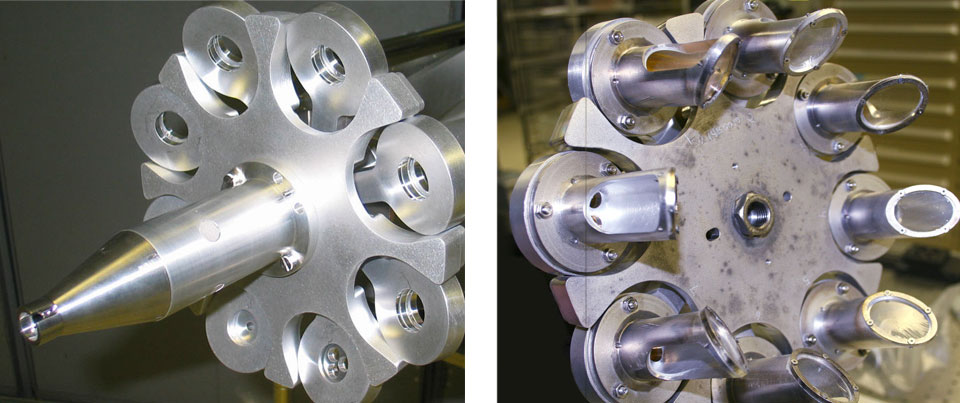No Shots in the Dark
November 13, 2019
The following is an excerpt from a story by Allan Chen in the July/August 2019 issue of Science & Technology Review.
During experiments at the National Ignition Facility (NIF), 192 laser beams converge onto a tiny target at the center of the 10-meter-diameter, spherical target chamber in support of stockpile stewardship and fusion-ignition physics. Livermore scientists use the data from these experiments to certify the safety and security of the nation’s nuclear stockpile and make progresss toward acheiving fusion ignition and energy gain. With NIF, researchers can also explore the physics of material conditions at the centers of gas giant planets and stars, as well as other extreme environments.
Researchers conduct approximately 400 shots a year at NIF. The facility relies on a small army of personnel to keep it operational 24 hours a day nearly year round. One of the many critical teams is the Debris and Shrapnel Working Group (DSWG). Its mission is to evaluate risks to NIF equipment from target debris and shrapnel produced during experiments. Through computer modeling, risk assessment analysis, and experience, the team helps ensure that debris and shrapnel generated by laser shots does not damage optics, diagnostics, or other components that are expensive and difficult to replace.
DSWG is one of three groups within TaLIS (Target–Laser Interaction Sphere), an umbrella group led by Dean LaTray whose purpose is assessing the potential damage to NIF from the interaction of the laser with the target. A second group within TaLIS examines the danger posed by laser–plasma interactions, which can cause laser light to pass back through the beamlines, damaging mirrors and laser glass. A third group performs configuration reviews, examining the interface between laser light, targets, diagnostics, and the rest of the target chamber. “The service TaLIS provides is unique because NIF is unique,” says LaTray. “We offer capabilities that no other facility can provide.”
 (left) The original x-ray source application (XRSA) test cassette positions eight sample holders in the direct path of the x-ray source during experiments. Simulations done by the Debris and Shrapnel Working Group (DSWG) led to the re-engineered XRSA platform (right), which includes thin, tilted prefilters that absorb soft x-ray energy and are vaporized. (Image courtesy of Kevin Fournier.)
(left) The original x-ray source application (XRSA) test cassette positions eight sample holders in the direct path of the x-ray source during experiments. Simulations done by the Debris and Shrapnel Working Group (DSWG) led to the re-engineered XRSA platform (right), which includes thin, tilted prefilters that absorb soft x-ray energy and are vaporized. (Image courtesy of Kevin Fournier.) To read the full story, go to Science & Technology Review.
—Allan Chen
Follow us on Twitter: @lasers_llnl



